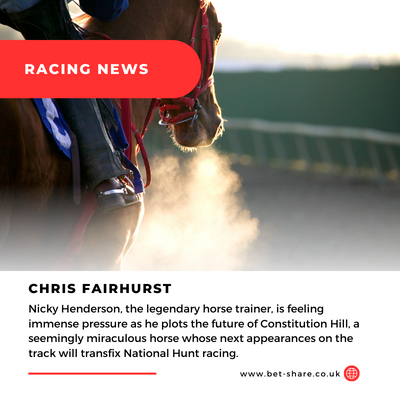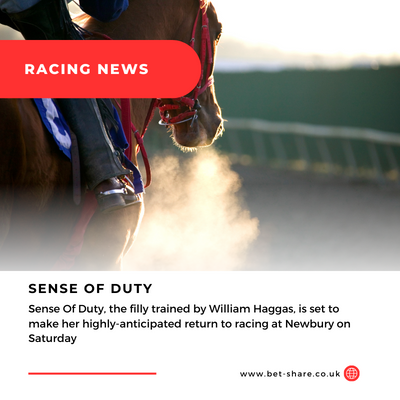The Prix de l’Arc de Triomphe is one of the most prestigious horse races in the world. In this article, the past renewals of the race will be examined to highlight significant statistics and trends. Andrew Asquith has done an in-depth analysis of the race and his findings will be presented here.
The race has a rich history, having been first run in 1920. It is held annually at Longchamp Racecourse in Paris, France. While the race is open to horses of any age, there are certain trends and statistics that have emerged over the years. This article will explore these trends and provide insights into what it takes to win the Prix de l’Arc de Triomphe.
Top-class three-year-olds tend to shine
The Prix de l’Arc de Triomphe is the most prestigious middle-distance race in Europe and has seen several three-year-olds emerge victorious in the race this century. In fact, since the year 2000, 12 three-year-olds have won the race, including some notable names such as Zarkava, Sea The Stars, Treve, Golden Horn and Enable.
This year’s renewal sees five three-year-olds in contention, with Ace Impact, trained by Jean-Claude Rouget, leading the market. Ace Impact is an unbeaten three-year-old who made his debut only in January. He is Timeform’s highest-rated three-year-old in Europe, having taken the step up to Group 1 company in his stride in the Prix du Jockey Club, where he had Feed The Flame back in fourth.
While the record of Prix du Jockey Club winners going on to win the Arc isn’t great, Rouget has a good record in the race, having trained both Sottsass and Vadeni, who finished placed at Longchamp. Ace Impact is a fresh horse and is expected to have no problem staying a mile and a half, while the ground is unlikely to be testing looking at the forecast, so he clearly has a favourite’s chance.
Continuous, trained by Aidan O’Brien, and Fantastic Moon, the German Derby winner, have been supplemented and are also set to compete in the race. However, it is worth noting that horses aged three or four have landed 18 of the last 20 runnings of the Arc, making the three-year-olds the ones to watch out for.
Overall, the three-year-olds have an excellent record in the race this century, and Ace Impact looks set to continue that trend. His exciting profile and unbeaten record make him a strong contender for the race, and his trainer’s previous success in the race only adds to his chances.
It remains to be seen whether Ace Impact can emulate the likes of Zarkava, Sea The Stars, Treve, Golden Horn and Enable and emerge victorious in the Prix de l’Arc de Triomphe, but going by his performances so far, he is definitely one to watch out for.
No Leger winner has ever followed up in same year’s Arc
Since 2000, only nine horses have gone on to run in the Arc after winning the St Leger, and none of them have won. The best result was achieved by the Charlie Appleby-trained Hurricane Lane, who finished third in 2021, while Kingston Hill finished fourth for Roger Varian in 2014. This record suggests that winning the St Leger does not necessarily translate into success in the Arc.
Despite this, Continuous, who won the St Leger this year, is still considered a leading contender for the Arc. He has progressed well since his disappointing run in the Prix du Jockey Club, finishing runner-up to King of Steel at Royal Ascot before winning the Great Voltigeur and then showing a turn of foot to win the St Leger.
Continuous is trained by Aidan O’Brien, who has trained six of the nine St Leger winners who have gone on to run in the Arc since 2000. While the statistics do not favour Continuous, he was a well-up-to-standard winner of the Leger on Timeform’s figures, and the drop back to a mile and a half is not expected to be a problem for him.
Overall, while the record of St Leger winners in the Arc is not encouraging, Continuous cannot be ruled out for top connections given the progress he has made in his last two starts.
Is the King George a Good Stepping-Stone?
The King George VI & Queen Elizabeth Stakes at Ascot has been a reliable indicator of success in the Prix de l’Arc de Triomphe. The race has produced several Arc winners this century and may hold the key to this year’s renewal.
In 2017, Enable won the King George before going on to win the Arc. This feat was last accomplished by Dylan Thomas in 2007. Workforce also famously won the Arc in 2010 after a dire effort in the King George. Waldgeist finished third to Enable in the 2019 King George but was able to turn around that form in the Arc.
This year’s renewal of the King George had considerable depth, and even with a couple of disappointments in the race, Hukum and Westover both produced top-class performances and were separated only by a head after a tremendous tussle in the final furlong. Westover was an impressive winner of the Irish Derby last season but could finish only sixth in the Arc 12 months ago. However, he looks like a more mature and improved model this year, and the return to likely better ground will give him every chance of reversing the form with Hukum.
Interestingly, Hukum is bidding to become the first six-year-old to win the Arc, with seven-year-old Motrico in 1932 being the oldest horse to win the race since its inception in 1920. Hukum is an admirable horse with plenty of stamina, and he produced a career-best effort in the King George last time. A likeable and straightforward type, he seems sure to launch another bold bid, but connections wouldn’t want the ground to dry out too much.
Overall, the King George has proven to be a reliable stepping-stone to success in the Arc. With many past winners of the King George going on to win the Arc, it is clear that the race is an excellent indicator of success in Europe’s most prestigious race.
Fillies and Mares Must Be Respected
The record of fillies and mares in the Arc is impressive, having won eight of the last 12 renewals. This year, Japanese mare Through Seven Seas is a contender and could potentially give Japan its first victory in the Arc. Although Japan has come close to winning in the past, with Nakayama Festa and Orfevre finishing second in 2010 and 2012, respectively, and Orfevre finishing second again in 2013.
Through Seven Seas was narrowly beaten by Equinox in the Group 1 Takarazuka Kinen at Hanshin in June, where she didn’t get a clear run. However, she appears to be improving with age and could add a different dimension to the race. She will need to put in a big career-best performance to win, but her past performance gives her a chance.
Fillies and mares also get a 3lb allowance in the Arc, which could be a significant advantage. It is worth considering the record of fillies and mares when making predictions for the race.
How significant is the Arc draw?
The draw for the Arc is a crucial factor, especially with up to 16 runners expected to compete. Since the year 2000, there have been six winners of the Arc who broke from a double-figure draw, with the highest of those being stall 15 in 2001 and 2013. However, the other 16 renewals have all been won by horses berthed in single-figure stalls. It is worth noting that the Arc was run at Chantilly in 2016 and 2017.
While a lower draw is generally preferred, it is not always necessary. Riding tactics will also play a significant role in determining the outcome of the race. In 2015, Frankie Dettori famously kept Golden Horn out wide from stall 14 before slotting over before turning into the straight on his way to victory.
Overall, while the draw is an important factor, it is not the only one that will determine the winner of the Arc.
Responsible Gambling
If readers are concerned about their gambling, they can call the National Gambling Helpline/GamCare at 0808 8020 133. Additional support and information can be found at begambleaware.org and gamblingtherapy.org.



